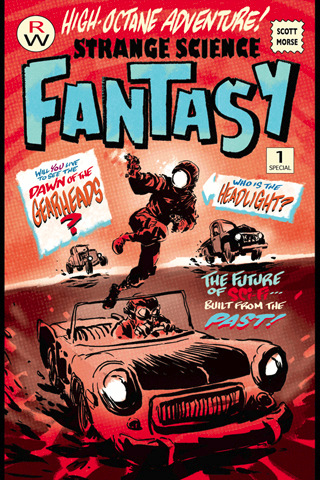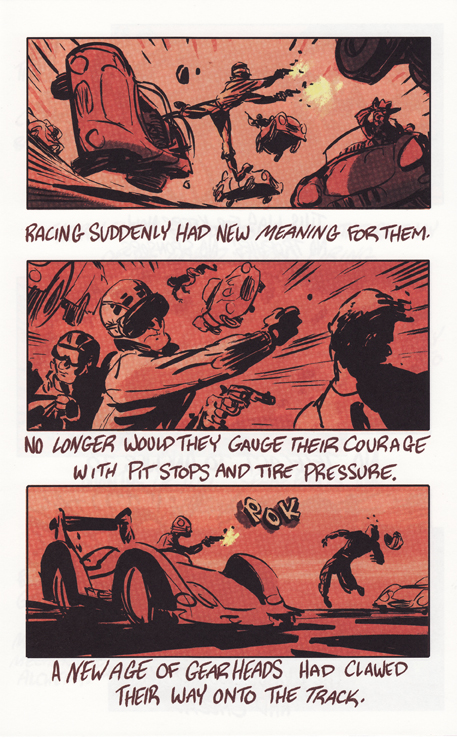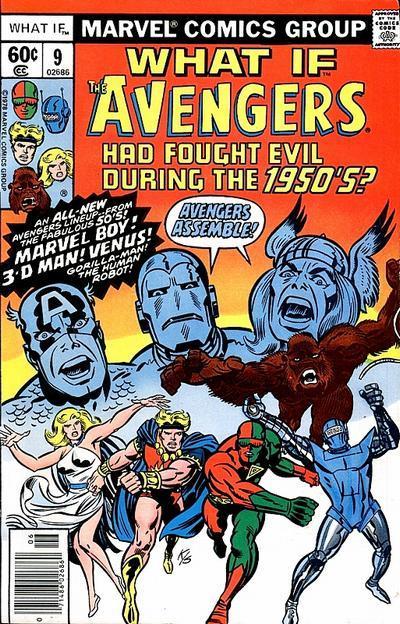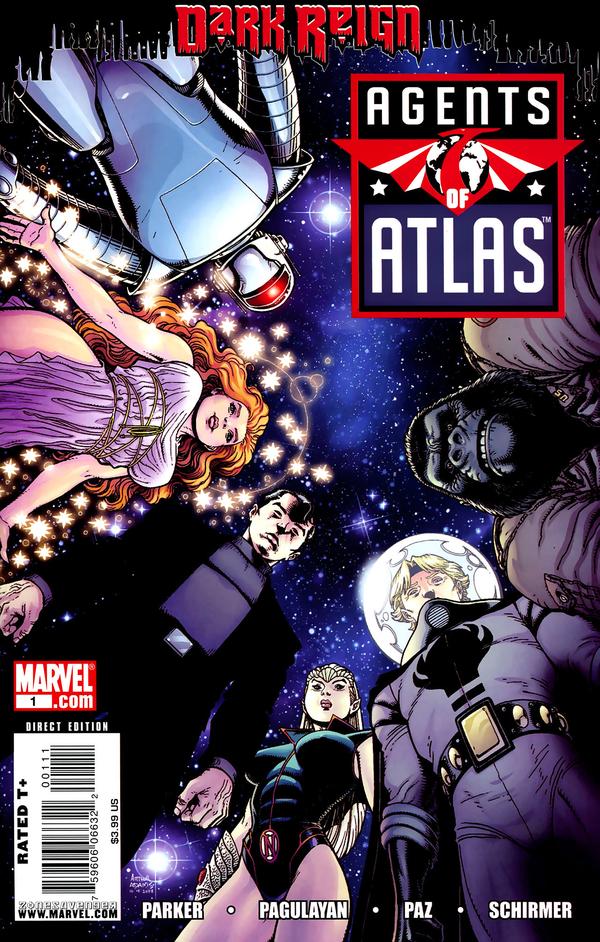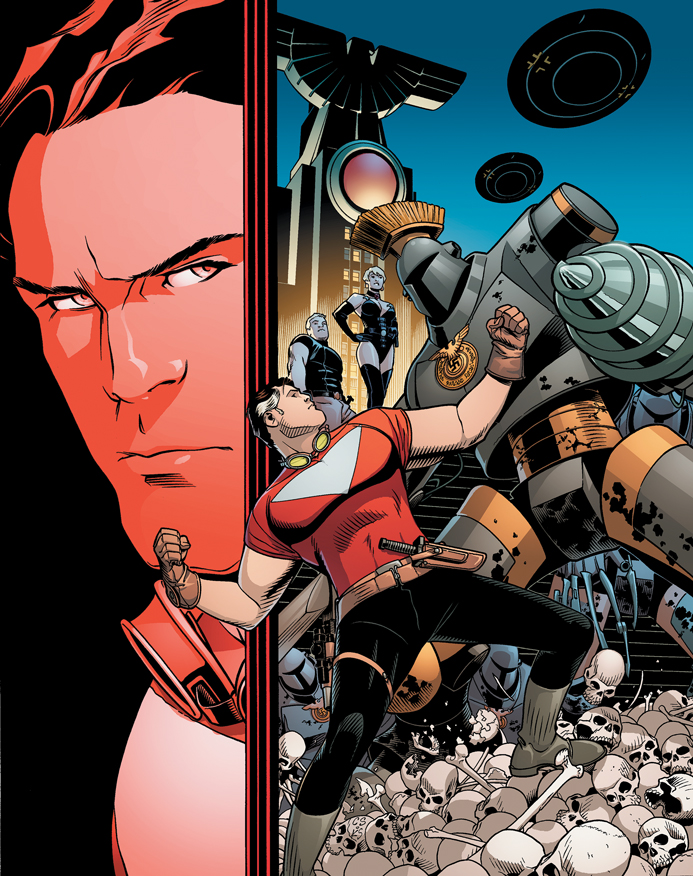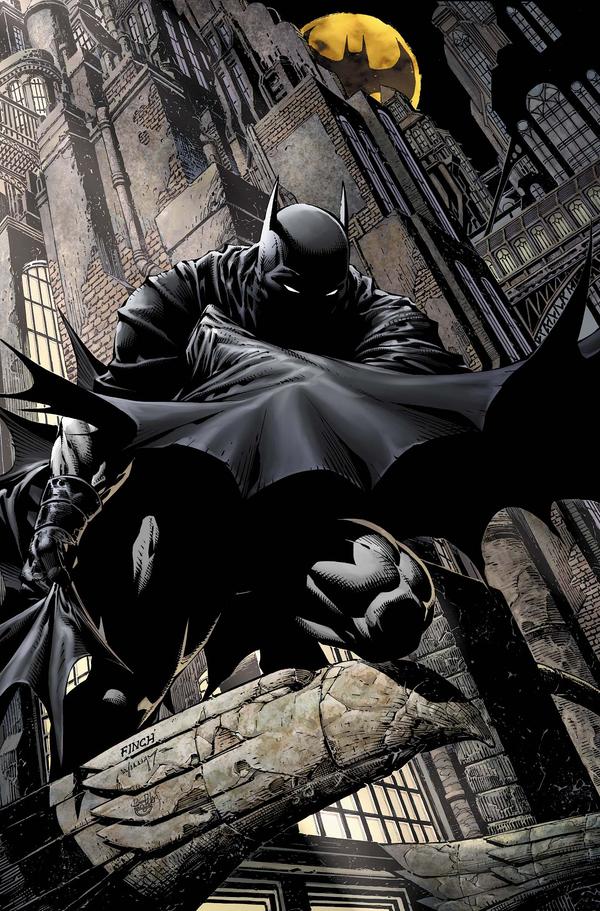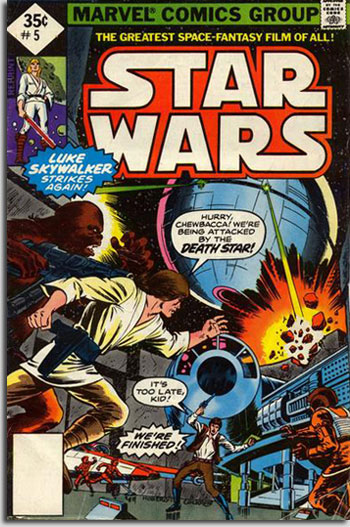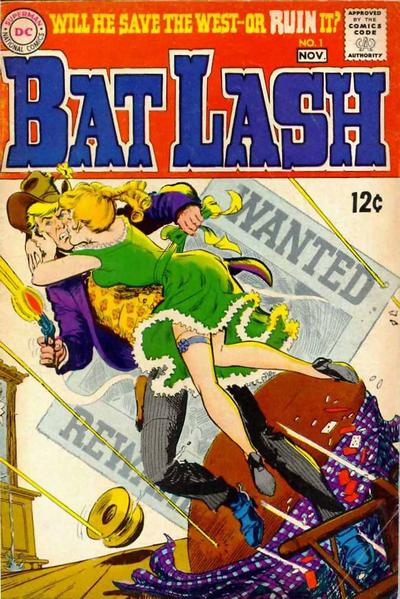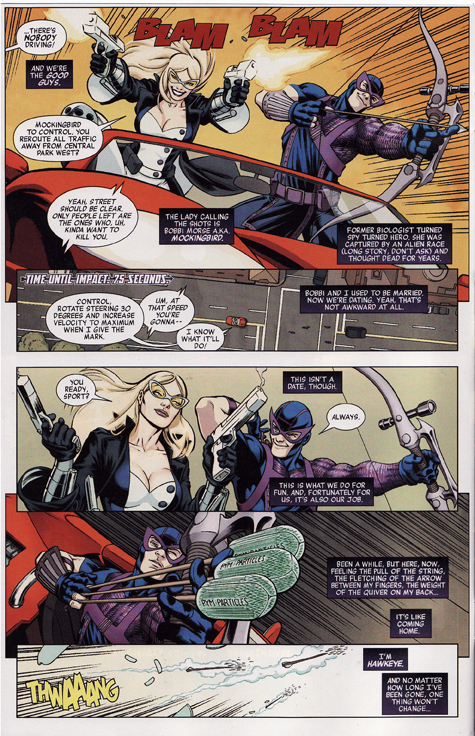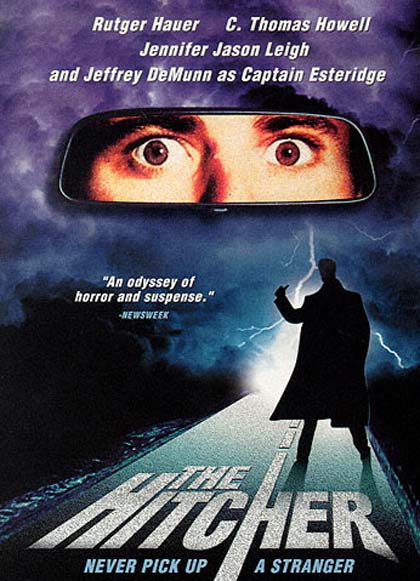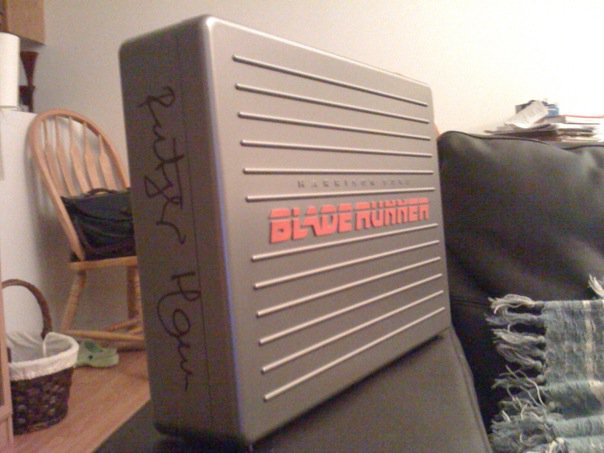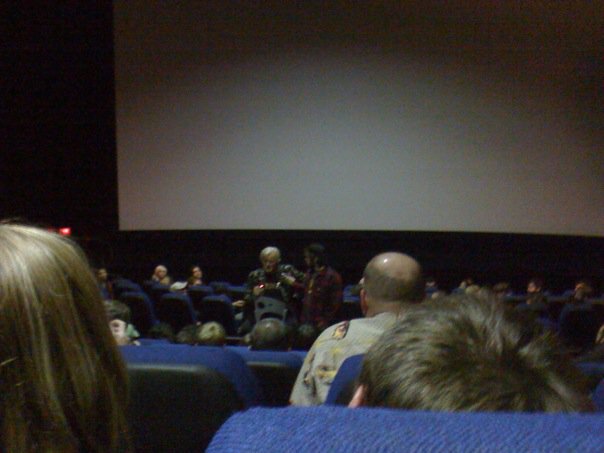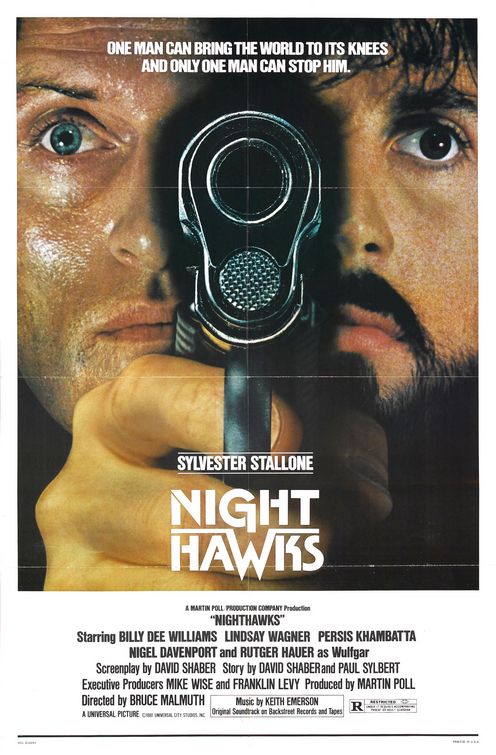It’s felt like the last few weeks have been particularly bleak and dreary in the world of comics, with lots of pain and death and suffering. However, this week’s new releases had a lot more fun stuff going on, and generally made me feel a whole lot better about the industry in general and superhero comics in particular. That’s not to say that some things weren’t depressing (shame on you, Amazing Spider-Man) or horribly violent (can at least one issue of Green Lantern pass without somebody being skeletonized or skinned alive?), but overall, things were looking up.

Dazzler #1: A few weeks back, I was pretty hard on 1984’s Dazzler: The Movie graphic novel. I’ll stand by that, but this Women of Marvel one-shot was a much better vehicle for everybody’s favourite disco-themed superheroine. The story involves Arcade (I love that guy!) using a bunch of killer robots, who correspond with a lot of the villains from Dazzler’s solo series, to try and kill the mutant songstress at the behest of her evil sister. There are some fun callbacks to the most ridiculous moments of Dazzler’s book—she once again has to face Dr. Doom and Galactus, albeit robot versions—but most ridiculous of all, she is forced to fight for her life in her original roller-skated, KISS-makeup’d costume. This was written by Jim McCann, who is also going to be scripting the upcoming Hawkeye and Mockingbird ongoing (I got my fingers crossed for that one, and this comic gave me a lot of hope), and drawn with great style by Toronto guys Ramon Perez and Kalman Androsofszky. There’s a short back-up that makes this into a Necrosha tie-in, but the main feature is the reason to check this out.

Hey, that's enough outta you!
Thunderbolts #144: Steve Rogers puts Luke Cage (himself a reformed criminal) in charge of a new team of T-bolts, mostly villains out to redeem themselves in this Heroic Age crossover. The team, made up of old school ‘Bolts like Songbird and Moonstone, as well as newbies like Crossbones and Juggernaut, is an odd mix that might make for some good readin’—strangest of all, Man-Thing is on board, using his connection to the Nexus of All Realities to provide the team’s transportation abilities. Jeff Parker continues his streak of writing great team books for Marvel (once again, if you missed Atlas last week, you need to get on that ASAP), also proving himself to be either a big fan of Aziz Ansari’s stand-up routine or the MTV reality dating show Next, or both—a female prisoner declares of Luke Cage, “If he’s got a neck tattoo, I’m gonna lick it!”. There’s also a great last-page villain reveal that is extra cool for longtime Thunderbolts readers. If Moonstone can just get herself a less slutty outfit, this book will be in great shape.

See? That is one trampy getup.

The Thanos Imperative: Ignition #1: This was maybe not the most new-reader-friendly one-shot, as it builds out of several Annihilation and War/Realm of Kings miniseries, not to mention the ongoing (but maybe now cancelled?) Nova and Guardians of the Galaxy books, but it did make me want to check out the next installment. Apparently, in some of those books, it was revealed that there’s a parallel universe that is slowly bleeding into the Marvel-verse, one where life has triumphed over death I guess? Even so, this happy-sounding place has been dubbed the Cancerverse, so it can’t be that great. Anyway, the denizens of this ‘verse want to invade the Marvel universe and eliminate death, starting with the avatar of death himself, the recently-resurrected Thanos. This was a confusing but intriguing first issue—it practically requires a flow chart to keep track of all its dozens of characters. But once again, the last-page reveal of the avatar of life from the Cancerverse—in other words, the big villain of the upcoming Thanos Imperative miniseries—is a cool shocker that, in retrospect, makes perfect sense.

G.I. Joe: Hearts and Minds #1: I haven’t read anything by Max Brooks prior to this, but the author of such bestsellers as World War Z and The Zombie Survival Guide manages to keep the living dead out of this miniseries (so far, anyway), telling two short stories focusing on a Cobra operative and a Joe soldier, respectively. First up, in the better of the two stories, we get a look at what makes cold-blooded mercenary (and lousy poet, if I remember his action figure’s file card correctly) Major Bludd tick, and the second story gives us some background on Joe tracking expert Spirit. Bludd's story contrasts his cold-bloodedness with his surprisingly tragic and decidedly mundane family history, while the Spirit story focuses on how the character hates that everyone just assumes, because of his Native American heritage, that he is an expert tracker...but, of course, he is an expert tracker anyway, hence his surly disposition. I have no idea where this fits in terms of continuity, if there even is such a thing where a bunch of action figures are concerned, but I was able to enjoy it purely based on my nostalgia for the G.I. Joe universe. Next up is Tripwire and Firefly! Man, I hope they get to Beach-Head at some point.

Seven Psychopaths #1: This is really getting to be the year of “guys on a mission” stories, what with The Losers, The A-Team, and The Expendables, isn’t it? This new book from Boom! Studios stars a disgraced British Army Colonel in London during the Blitz, who gets a letter from an old guy named Goldschmidt in an insane asylum, advocating the use of a team of certified lunatics to drop into Berlin and assassinate Hitler. That’s so crazy, it just might work! The Colonel springs Goldschmidt and they begin assembling their team, on the premise that these guys (and gals) will be so nutty and unpredictable that the Nazis won’t be able to catch them or stop them—also, that the mystical significance of the number 7, as in there will be seven of them, will give power to their cause. I don’t know where Sean Phillips found time to draw this, between his stints on Criminal and the new Dark Tower series, but I’m glad he did. Fabien Vehlmann's script is tight, and funny too—my favourite part is when Goldschmidt notices that the Colonel’s file on the project is labeled “Seven Psychos”, and he gets all offended by it. I have not idea where this story could be going, but I hope the creators go all Tarantino with it and create their own batshit crazy ending for WWII.

Secret Avengers #1: Not that it took much, but this book really blew the doors off last week’s Avengers relaunch. Like Thunderbolts, this is a totally strange assortment of Marvel characters from different eras and genres (War Machine, Nova, and Moon Knight, together at last?!?), but Ed Brubaker sells it. This shadow-ops team deals with all sorts of crazy threats before they can even become threats, and their varied specialties come in mighty handy. The result is a cool mix of real world (well, Marvel real world) action and cosmic intrigue that has lots of callbacks to old-school House of Ideas. The Serpent Crown? That dastardly Roxxon corporation? Now you’re talking my language, Brubaker! There’s a predictably cheesecakey opening scene where Valkyrie and Black Widow have to go undercover as call girls—the superheroine glass ceiling at work—but otherwise, artist Mike Deodato, who I’m not normally a big fan of, turns in some surprisingly good work here. His shadowy visuals work the conspiracy angle nicely, and he shifts gears ably from “realistic” scenes, like the opening gambit in Dubai, to the trip to Mars in the final pages. Also, Marvel pulls the hat trick for final page bad guy reveals this week, with this issue’s mastermind being the most surprising of the three. Also, I cannot overstate how awesome it is to have the Beast on an Avengers team again. We gotta get Wonder Man in on this so they can be all rowdy ‘til dawn like they used to.

Who wouldn't want to party with those guys?
